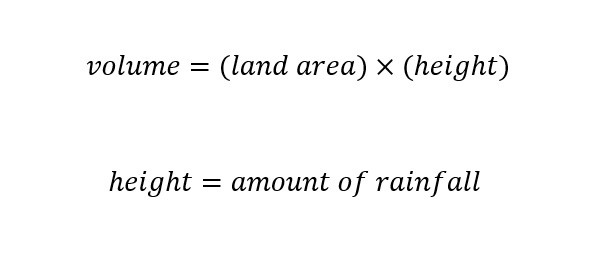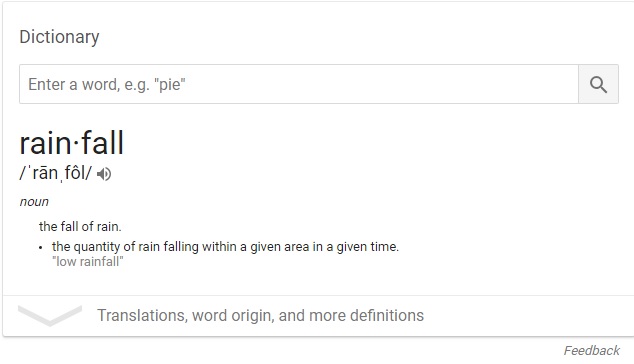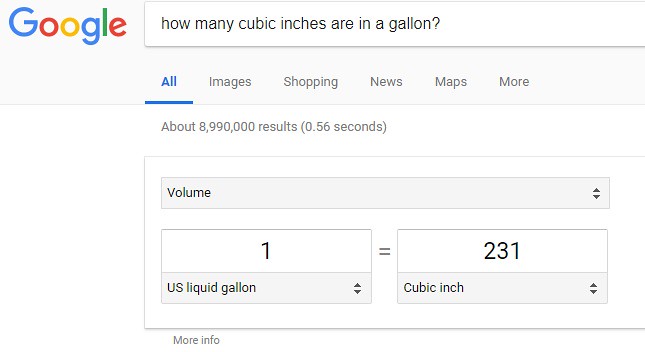Source: Time
As Americans were watching Hurricane Florence ravage the East Coast of the United States over the weekend, residents of the Philippine Islands were experiencing an equivalent destruction of their country from Typhoon Mangkhut. According to the New York Times article titled "See Inside Typhoon Mangkhut in 3-D" at the height of maximum rainfall over the Philippines, the rate of rainfall reached 11.7 inches as shown in the excerpt below:
Rain tends to be heaviest near the center of a storm, in what is known as the eyewall, visible here in red. The highest rainfall rate for Typhoon Mangkhut reached 11.7 inches per hour inside the southern wall on Friday.
With this astounding rate of rainfall in mind, regular readers of this site will naturally ask themselves the following question:
How many Superdomes were filled per hour by Typhoon Mangkhut?
In the paragraphs below, the amount of Superdomes are calculated using dimensional analysis. The result as indicated (potentially 25,000 Superdomes per hour) is astonishing. Following the analysis is a video confirming the astounding number which should blow your mind.
How Many Superdomes Per Hour?
Basically, for the current blog post, the same methodology which was used to calculate the number of Superdomes which could be filled with the predicted rainfall due to Hurricane Florence - which I posted last Friday. The Mercedes-Benz Superdome is located in Louisianna and has an interior volume of 125,000,000 cubic feet. Shown below is a picture of the Mercedes-Benz Superdome:
Source: The Advocate
Superdomes can be a 'metric' which are commonly used to cast large (enormous) values of volumes or statistics popularly reported in the news. The maximum rate of rainfall reported in the New York Times article above is a perfect candidate along with the landmass of the Philippine Islands -- which makes a volume -- to be used in an analysis with the metric above used. The volume of rainfall can be expressed as an equation as shown below:
The volume for a geographic area is the land mass area multiplied by the amount of rainfall over the given land mass area. If we consult Google with the following question: Rainfall? The definition of the term 'rainfall' is shown below:
The definition of rainfall is 'the quantity of rainfall falling.' To begin the analysis (with actual numbers) the land mass (total area) of the Philippine Islands needs to be determine. As usual, Google is consulted with the following question: Philippine Area? The answer is shown below:
Notice that the area (land mass) is expressed in units of measurement of 'square mile'. When the maximum rainfall is reported in units of 'inches', a decision to convert one number to the other needs to be made. For this analysis, 'inches' will be the unit of measurement for analysis -- at least the beginning of the analysis. In order to convert the land mass area of Philippine Islands from units of 'inch' to 'mile' the following question needs to be asked in a search engine like Google: How many square inches in a square mile? The answer is shown below:
For every single square mile, there are 4.014 billion square inches. The conversion of units from 'square miles' to 'square inches' is shown below:
The answer above shows that Philippines is around 116 thousand square miles which when converted to square inches turns out to be 460 trillion square inches. Now that the land mass area is converted to units of square inches, the volume of rain which fell at a maximum on Friday due to Typhoon Mangkhut can be calculated using the expression for volume from above:
Wait? The above equation is 'rate of rainfall' -- whereas I stated that the volume was being computed above? Why the difference? As I stated above, the amount of rain falling over and hour was reported to be 11.7 inches/hour. Which is a rate. Therefore, the volume is actually the rate of volume of rainfall over a given time as shown below:
With 11.7 inches/hour of rainfall pouring down due to Typhoon Mangkhut, the total amount (volume) of rain would be 5,400 trillion cubic inches per hour of rain. Wow! Based on the calculations in the previous blog post regarding the total amount of rain predicted (by a forecaster) due to Hurricane Florence, lets cast the rate of rainfall into comprehensible units. To do so, a unit conversion needs to be accomplished from units of 'cubic inches' to 'gallons'. A conversion factor needs to be determined.
If the following question is typed into Google: How many cubic inches are in a gallon? The answer is shown below:
With the conversion factor known, the conversion is carried out by using the same methodology as above:
Therefore, the amount of rainfall over the Philippine Islands at maximum rainfall is shown below:
Wow! 23 trillion gallons in a single hour. In my previous blog post about the predicted amount of rainfall over four states (in a few days) was expected to be 17 trillion. The difference shows that Typhoon Mangkhut is larger than Hurricane Florence. This is not to say that Hurricane Florence is not inflicting a large amount of damage in the United States over the weekend. The East Coast is in terrible shape and we are keeping the residents there in our thoughts. Be safe.
The metric which has been used to visualize large volumes of rain is the Mercedes-Benz Superdome as shown above. With a volume of 125,000,000 cubic feet, the Superdome is a perfect metric to which compare the large volume of rain falling over a given region in a storm. To calculate the number of Superdomes which could be filled with 23 trillion gallons/hour, first a unit conversion needs to be accomplished. In order to compare the 23 trillion gallons/hour to 125,000,000 cubic feet, a unit conversion from 'gallon/hour' to 'cubic feet/hour' needs to be accomplished.
To determine the number of 'cubic inches' are in a 'cubic feet', we type into Google the following question: How many cubic inches are in a cubic foot? The answer is shown below:
The conversion of units between 'cubic inch' and 'cubic feet' is shown below:
Next, to determine the number of Superdomes which could be filled with the amount of rain falling over an hour over the Philippine Islands is shown below:
Wow! The total amount of Superdomes which would be filled at the rate of rainfall equal to 3.1 trillion cubic feet per hour is a whopping 25,000 Superdomes per hour.
The final question is the following:
Does the amount of rainfall -- 3.1 trillion cubic feet per hour over the Philippine Islands make sense?
To answer the question above, lets view the video from YouTube below taken over the weekend during the storm - Typhoon Mangkhut:
Wow! I am left speechless by the video above.
Conclusion...
Oh my goodness? The amount of rain is enormous and unparalleled. Between the total number of storms hitting the globe over the weekend, the amount of rainfall is historic and unparalleled in volume. The rainfall must be surging into the hundreds of trillions of gallons of water falling on land masses like Philippine Islands and the East Coast of the United States of America. Destruction is inevitable. Just think of the amount of time and effort which will be required to restore basic resources like power and water? The destruction is huge and should not be understated. Keep the residents experiencing these terrible storms in our thoughts and prayers.
Related Blog Posts:
A Forecaster Predicts That Hurricane Florence Will Drop Enough Rain To Fill 18,400 Mercedes-Benz Superdomes
Hurricane Harvey Drops Enough Rain On Houston To Fill 560 Dallas Cowboy Stadiums
How Much Water Is Contained In All Oceans Around The Globe?
Storm Raises Water Level In Lake Cachuma By 31 feet, How Much Water Is That?
How To Make Sense Of Water Flowing At 100,000 Cubic Feet Per Second
Can 11 Trillion Gallons Of Water Fill 14,000 Dallas Cowboys Stadiums?
How Much Rain Did The East Coast Receive From Hurricane Matthew?
How Much Rain Did Haiti Really Receive?
How Big Was The "Water Bomb" Of Rainfall In Macedonia?
How Much Rain Did Elliot City (Maryland) Really Receive?
If The Mosul Dam Breaks, The City Of Mosul Would Be Under 65 Feet Of Water?
What is the volume of water in a few inches of rain?
Volume of Waste in the Mine Spill (in Brazil) Equivalent to 78 Deepwater Horizon Oil Spills















No comments:
Post a Comment